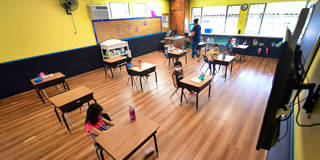If there is a potential silver lining to the United States' experience with COVID-19, it can be found in the domain of primary and secondary education, where the demand for alternatives to traditional public schools is surging. The pandemic has both laid bare the US education gap and pointed the way to a solution.
STANFORD – After years of rumblings for change in US education, the COVID-19 pandemic is becoming a catalyst for improving the system. America’s educational divide – especially in grades K-12 (elementary through high school) – is now clearly visible for anyone to see. Disparities in quality and access to education are a major source of the economic, social, and racial inequalities that are driving so much social unrest from Austin and Oakland to Portland and Seattle. Whether they come from impoverished inner-city neighborhoods or the suburbs, the least-educated Americans have been the hardest hit by the pandemic and its economic effects.

STANFORD – After years of rumblings for change in US education, the COVID-19 pandemic is becoming a catalyst for improving the system. America’s educational divide – especially in grades K-12 (elementary through high school) – is now clearly visible for anyone to see. Disparities in quality and access to education are a major source of the economic, social, and racial inequalities that are driving so much social unrest from Austin and Oakland to Portland and Seattle. Whether they come from impoverished inner-city neighborhoods or the suburbs, the least-educated Americans have been the hardest hit by the pandemic and its economic effects.